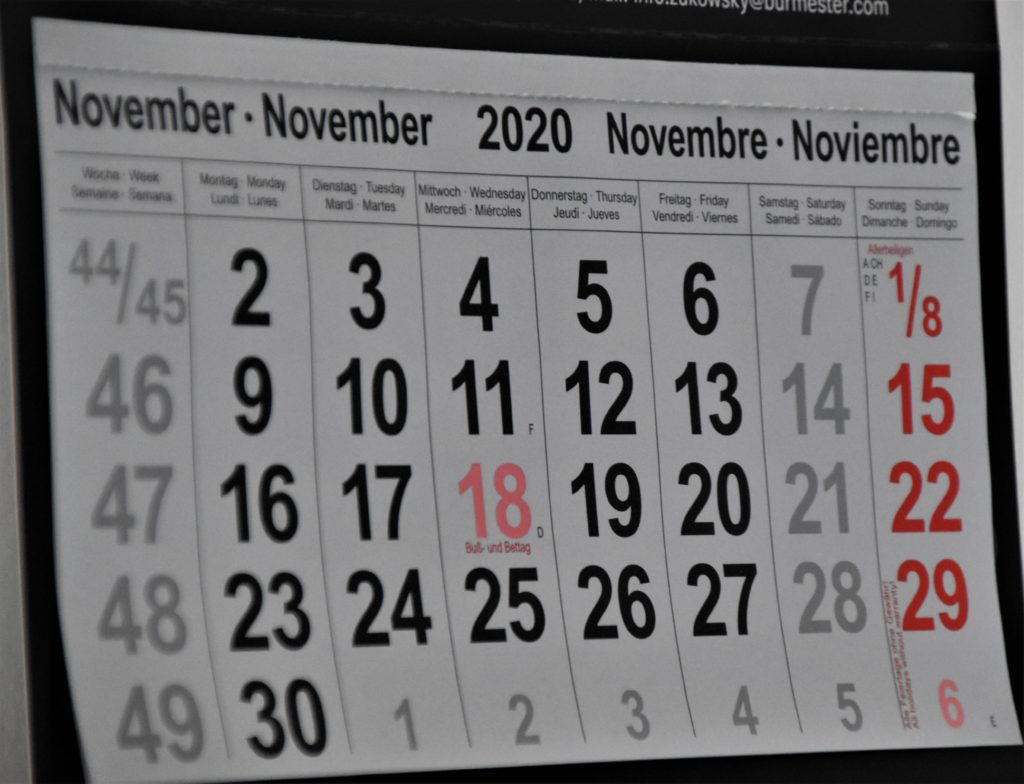How to Set Up Your Communications Department for Effective Church Calendar Planning
Step 1: Realize you have clients and treat them as such.
ArtSpeak is a creative agency, and we’re grateful for those people that make our existence possible…
Our clients!
Clients mean work. Work means job security.
Of course, ArtSpeak’s clients are mostly ministries — something I’m incredibly passionate about. I like being part of what they’re doing.
But clients also help my wife and me pay for our life. I have kids. They like to eat, live in a warm house, play sports, and take lessons. Clients make all of that possible.
And when you work for a ministry, your “clients” make your life possible, too. Those clients — your pastor, executive team, and department heads — are in-house! You don’t have to go out and find them.
Having been on both sides of the equation ourselves, we’ve seen many problems churches can repair by moving creative departments toward an agency-client model.
Every agency has important clients. Your pastor and your executive team — that’s a big client. Pay attention to what they need first. Be sure not to do that to the exclusion of all other clients.
Then, agencies have secondary clients. For a church, that would be your youth, children’s, men’s, women’s, and outreach ministries. The bigger your ministry, the more “clients” you have.
Step 2: Get the right tools for the job.
Every creative agency, much like every church communications team, starts with tools for “doing the work.” It’s an Adobe suite, some kind of word processor, and website creation tools for many of us.
But to manage an agency, we use tools that help us keep track of projects, communicate with clients, and stay organized.
Here are the primary tools we use:
PROJECT MANAGEMENT SOFTWARE
While there are many tools for project management, our team uses Asana. We use Asana both to keep track of projects by client and to communicate with those clients.
SLACK
Your pastor doesn’t need to see every detail, ideation, or Giphy exchange your team creates while working on his sermon graphic. We communicate with each other in Slack using channels created for clients. And then channels created for other internal purposes.
Shared Drive
Use Google Drive with File Stream because everyone on your team should have access to the files you’re working on at all times. Especially with the craziness of ministry life, you shouldn’t organize your files by employee. Instead, share them all, and categorize them by client.
Time Tracking
At ArtSpeak, we use FreshBooks. The reason for using time-tracking software is simple: You need to have a pretty good idea of how long it takes to complete a given project. That way, you can share that information with everyone else. The information it provides will help you create your planning calendar.
Step 3: Schedule regular strategy meetings with your “clients.”
At ArtSpeak, regular strategy meetings are a feature of our retainer relationships. Most clients have a once-monthly meeting with us.
Most clients have a once-monthly meeting with us.
Some clients — those with heavy needs and to whom we’ve committed several hours a month — will meet with us weekly.
Pastors, do you and your executive team make it easy for the communications team to get direction and feedback from you? If you expect a lot of production from your communications team, try to make a once-weekly meeting happen.
The purpose of those strategy meetings is simply this: Dream about what’s next.
Dream about what’s next.
Take, for example, the youth pastor mentioned previously. (You know, the one who tells you about the yearly retreat just a few days before it happens every year?)
In your November monthly strategy meeting, using empathetic, proactive communication, you can say, “Hey, every year you have a retreat in January. Let’s talk about what’s happening this year — and let’s dream about what it can be.”
Maybe this year, that youth pastor is moving the retreat online. They’re going to need videos, a social campaign, and a landing page.
Without this meeting, they wouldn’t have gotten full use of their in-house agency. You wouldn’t have had the chance to shine as the consultant you are. Not only that, you’ll get to:
- Build a stronger relationship with that “client”
- Speak into the feel, structure, and maybe even the name of the event
Step 4: Create a space that makes calendar planning easy.
When I (Jason) was the creative director for a church, there was a massive eighteen-month, dry-erase planning calendar in our church’s executive suite. Now, I’m old-school … I love dry-erase boards. They’re my happy place.
I found another dry-erase calendar sitting unused in another room. I put it in the creative department and mirrored the executive calendar, then created a little environment around it with a high-top table, barstool chairs, and cool lighting.
Then, each department head would come into the creative department’s little “world” to dream and plan.
We’d look at the calendar together. Suppose someone wanted to plan an event that would conflict with another executive-team-approved event. In that case, we’d know immediately the date wouldn’t work.
When we settled on an event date, we would start to talk about what they would want. As we came up with a list of deliverables, I could tell them how many weeks each deliverable would take to create.
When we did that, we would have a clear date for a kick-off meeting.
Standing in front of a calendar with a clear understanding of how much time each deliverable requires, we eliminated many inter-departmental arguments.
Instead, I had a chance to help that leader become a better planner, a better steward of his budget (no more rush orders!), and a more effective communicator.
Download our 2023/2024 18-month church-planning wall calendar here.
Step 5: Get buy-in from the senior pastor for your new systems (this is really step one)
Creative teams, let your pastor help you create and communicate any new rules and systems you have to implement. Show them how it can save your church from burning people out and burning through money unnecessarily.
In my context as a creative director on a church staff, I created a memorandum of understanding that included all of this information plus the tiered event system (see below for more information on that). If everyone’s in on it, especially the senior pastor and the executive team, you’ll be able to communicate with confidence.
These systems may not create utopia, but they’ll go a long way toward building relationships inside your church staff and volunteer base.




